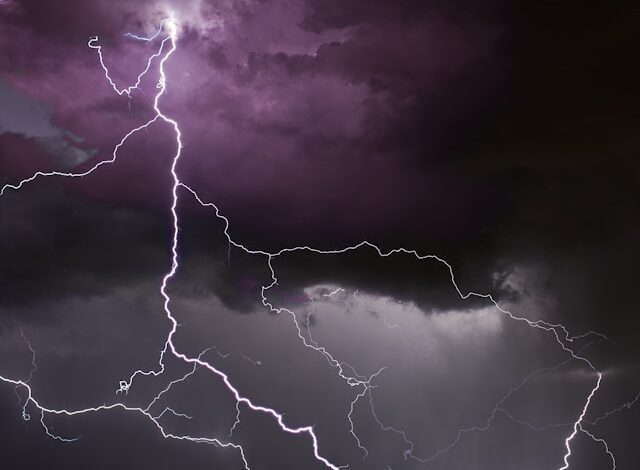Get Ready: More Rainfall Expected in UAE Weather

The United Arab Emirates (UAE) has been experiencing unseasonably wet weather over the past few days. According to forecasts from the National Centre of Meteorology (NCM), more rainfall can be expected across parts of the country in the coming days.
Recent rainfall has already impacted parts of Abu Dhabi, with light showers falling across the emirate. The NCM has said that the probability of additional light rainfall is high, especially in eastern and northern areas. Over the next 24 hours, the chance of precipitation will remain elevated.
Outside of the rainfall, humidity levels are expected to remain high overnight. Cloudy skies and foggy mornings are also in the forecast through the end of the week. Daytime high temperatures will top out around 28°C for coastal regions, with overnight lows dropping to 14°C.
Mention of the expectation for more rainfall in the region
The unsettled weather pattern bringing rain to the UAE is expected to continue in the short term. According to meteorologists, atmospheric conditions remain favorable for further rainfall across parts of the country.
With high humidity and cloud cover firmly entrenched across the area, periods of precipitation remain likely. Forecast models indicate that the current rainfall pattern could persist for several more days before drier conditions return.
Residents should prepare for on and off rainfall, especially in northeastern portions of the country. The showers are not expected to be heavy, but roads could become slippery and localized flooding is possible in poor drainage areas.
Factors Influencing Increased Rainfall
The recent rainfall may be partially attributed to the ongoing cloud seeding operations regularly conducted by the UAE.
Cloud seeding is a technique used to stimulate precipitation by injecting special particles into suitable clouds. According to the NCM, the UAE carries out approximately 300 cloud seeding missions every year.
The particles essentially give water vapor in the clouds additional surfaces to condense upon. By facilitating condensation, the cloud seeding causes the clouds to thicken and develop showers that may not have otherwise formed.
Cloud seeding requires specific atmospheric conditions to be effective. The NCM closely monitors weather radar and other data sources to identify clouds that may be viable candidates for seeding based on internal dynamics and moisture content.
Explanation of how cloud seeding enhances predicted rainfall
The UAE’s cloud seeding program relies on the precise application of silver iodide particles into overcast skies to enhance and increase rainfall.
According to Omar Al Yazeedi, deputy director at the NCM, cumuliform clouds like cumulus clouds with a heaped shape and strong updrafts at their bases are the best targets for seeding operations.
The strong rising air currents inside these clouds provide an efficient mechanism for transporting the silver iodide particles high into the cloud where they can begin accumulating additional moisture.
As the particles are lifted upwards, water vapor condenses rapidly on their surface area, facilitating droplet growth. This leads to clouds thickening and priming showers that may not have formed without seeding.
By identifying clouds with the best internal dynamics for responding to seeding, the NCM can greatly increase the effectiveness of each cloud seeding operation and enhance predicted rainfall over targeted areas.
Impact of Increased Rainfall
The recent rainfall has had positive impacts across the UAE. Increased precipitation has cooled temperatures and cleared dust and haze from the air leading to improved air quality.
The showers have also provided critical moisture to parched landscapes across the country. Parks and gardens are benefiting from the precipitation with vibrant, renewed greenery on display.
For the agricultural industry, the rain has been a welcome sight. Farms and orchards rely on adequate rainfall to ensure crops and trees receive sufficient water. The showers have saturated soil and replenished irrigation reservoirs.
With rainfall scarce across the Middle East, periods of wet weather like the current pattern provide environmental and economic benefits. However, heavy or prolonged downpours can also introduce problems.
Potential benefits and challenges associated with additional rainfall
While the recent rainfall has been mostly beneficial for the UAE, periods of particularly heavy precipitation can cause issues for transportation networks and infrastructure.
Intense downpours in poor drainage areas often lead to flooding, disrupting roadways. Standing water on highways can increase risks for hydroplaning and accidents.
Runoff from heavy rainfall may overload storm drainage systems in urban areas, causing backups and overwhelmed collection ponds. Overflows can flood streets and properties on lower ground.
In rural areas, high rainfall rates may induce flash flooding in wadis and low-lying zones. Rapidly rising water levels can strand motorists if flooding is not expected.
Preparation for More Rainfall
With additional rainfall in the forecast across the UAE, residents should take steps to prepare for wet weather.
When venturing out on the roads, maintain slower speeds, increase following distance from other vehicles and stay alert for pooled water on the pavement.
Avoid driving across flooded roadways or through running washes. As little as a few inches of water can sweep away a vehicle.
Keep an eye to the sky and seek shelter if thunderstorms develop. Do not shelter under isolated trees or towers and stay away from rising water levels if flash flooding occurs.
Around the home, clear rain gutters and drainage areas to allow water to runoff efficiently. Secure loose outdoor furniture and objects that may blow around in gusty winds.
Pay close attention to weather alerts and notifications to stay up to date on the latest rainfall forecasts and flood risks for your area.
Conclusion
The UAE is in the midst of an active weather pattern bringing unusual rainfall for the typically arid country. Showers are expected to continue intermittently in the coming days. Cloud seeding operations may be enhancing the precipitation, but natural climate drivers also play a role during the annual wet season. The rainfall should taper off within a week or two. The showers bring mainly positive impacts, but also raise flooding risks if sufficiently intense. Residents are advised to exercise caution on the roads and prepare homes and properties to handle heavy runoff.



